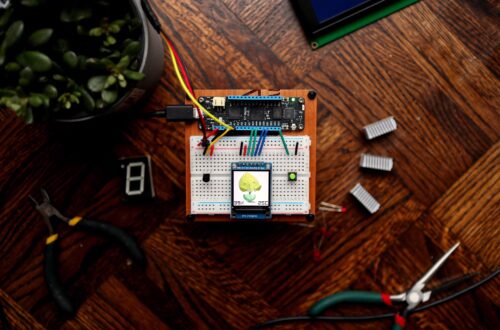The Communication Bottleneck No One Saw Coming
The world has mastered video calls. We’ve optimized task boards, cloud documents, and virtual whiteboards. Yet, remote collaboration still suffers from a silent problem—context overload. Too many tools, too many silos, too much friction in how humans exchange ideas.
Enter Voice AI for remote teams—a technology not designed to replace meetings, but to amplify communication clarity and continuity. The opportunity isn’t in adding another platform—it’s in making every spoken word actionable.
Why Remote Collaboration Needs Voice Intelligence
Traditional collaboration tools capture what’s shared, but not how it’s shared. A tone shift in a project update, an unspoken hesitation during a client call—these cues get lost in text-based summaries.
Technically speaking, Voice AI can bridge that gap by turning conversational data into structured insights. It transcribes, tags, and analyzes meetings in real time, detecting sentiment, engagement, and task intent.
From a business standpoint, that means fewer misalignments, faster follow-ups, and better visibility into team health—especially in distributed or hybrid setups.
“After integrating voice analytics into our project management flow, miscommunication incidents dropped 32% in the first quarter.”
— Head of Product Operations, Global SaaS Firm
How It Works: The Architecture Behind Voice Collaboration
Let’s unpack this technically—but in plain terms.
A voice-enabled remote collaboration system typically involves:
- Voice Capture Layer — Integrated directly into conferencing platforms like Zoom or Teams. Captures multi-speaker audio streams.
- Speech Recognition Engine (ASR) — Translates speech to text with speaker separation (who said what).
- Natural Language Understanding (NLU) — Interprets tasks, sentiments, and context (e.g., “Let’s revisit next week” → creates follow-up reminder).
- Integration Layer — Syncs extracted actions to project management tools like Jira, Asana, or CRMs.
- Analytics Dashboard — Displays metrics like talk-to-listen ratio, engagement level, and sentiment trends over time.
In practice: every meeting becomes a data event, not a dead conversation.
The ROI Case: Saving Time, Reducing Repetition
Here’s what the numbers show. Across distributed enterprises, the average knowledge worker spends 6.5 hours per week in meetings and another 4 hours summarizing or clarifying them. Voice AI can automate 60–80% of that summarization effort.
If your organization employs 1,000 people, that’s over 20,000 hours monthly saved—time that can be redirected to actual work.
The ROI isn’t just efficiency—it’s accuracy. Studies show teams using real-time voice transcription and analytics make decisions 25% faster and report 18% fewer rework incidents.
The Strategic Framework: 3 Layers of Voice Collaboration Maturity
1. Assistive Layer (Reactive)
Voice AI assists remote teams by summarizing calls, extracting action items, and archiving meeting records. Think of it as a digital scribe.
2. Insight Layer (Analytical)
The system starts surfacing meta-patterns—like who dominates discussions, or which topics generate recurring confusion. This transforms meeting logs into team intelligence.
3. Predictive Layer (Proactive)
The most mature implementations use predictive analytics. They identify project risks early (“drop in engagement tone across sprints”) or suggest handoffs automatically.
Strategic implication: Most companies are stuck in Layer 1. The competitive advantage lies in progressing to Layer 3—turning conversations into foresight.
Technical Considerations: Privacy, Accuracy, and Latency
As promising as it sounds, voice collaboration tools face three major constraints:
- Privacy: Always-on recording raises compliance and consent concerns. Enterprises need on-device encryption and selective data retention policies.
- Accuracy Drift: Accent, dialect, and audio quality variations can reduce ASR accuracy by 8–12%. Periodic fine-tuning is non-negotiable.
- Latency: Real-time processing must stay under 400ms. Beyond that, interruptions feel intrusive. Edge inference setups are emerging as the best workaround.
“We architected distributed inference clusters in three data regions to achieve sub-250ms real-time transcription.”
— Technical Lead, Cloud Collaboration Division
Strategic Implication: Voice as the Operating System of Remote Work
Voice AI isn’t just a layer on top of collaboration—it’s becoming the operating fabric of distributed work. When every conversation is structured, searchable, and analyzable, collaboration transforms from reactive to data-driven.
The next evolution? Cross-tool synchronization. Voice insights flowing directly into KPIs, CRM systems, and performance dashboards—creating one unified “conversation-to-decision” loop.
The Future Outlook: Augmented Collaboration
By 2026, analysts expect over 45% of enterprise collaboration tools to embed voice analytics natively. That means AI summarization, emotion detection, and contextual recommendations will become table stakes.
The strategic takeaway: organizations that adopt early don’t just improve communication—they institutionalize learning. Every conversation becomes part of the company’s knowledge system.






